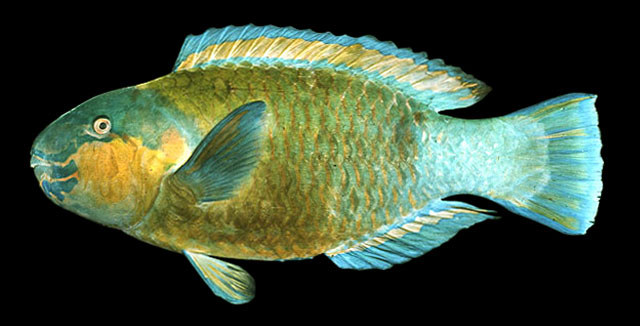| Scaridae (Parrotfishes), subfamily: Scarinae |
| 40 cm TL (male/unsexed) |
|
reef-associated; brackish; marine; depth range 0 - 50 m, oceanodromous |
| Indian Ocean. |
|
Dorsal spines (total): 9-9; Dorsal soft rays (total): 10-10; Anal spines: 3-3; Anal soft rays: 9-9. Initial phase very variable in coloration. Small individuals may be uniformly dark brown to light gray with or without the dark-centered light area on the caudal peduncle; large individuals may have a series of irregular rows of small light spots posteriorly or have the dark-centered light area on the caudal peduncle. The terminal phase is also variable with or without a large tan area on the side or on the caudal peduncle. Rounded snout (Ref. 48636). |
| One of the most widespread parrotfishes, but highly variable and some geographical forms that are probably subspecific (Ref. 48636). Inhabit both coral rich (Ref. 58652) and open pavement areas of shallow reef flats and lagoon and seaward reefs (Ref. 5213), as well as drop-offs, behaving differently in various areas (Ref. 48636). Benthopelagic (Ref. 58302). Juveniles found in coral rubble areas of reef flats and lagoons (Ref. 9710). Juveniles and individuals in the initial phase form large groups that migrate great distances between feeding and sleeping grounds (Ref. 9710). Feed on benthic algae (Ref. 30573). Minimum depth range reported taken from Ref. 30874. Protogynous (Ref. 55080). Minimum depth from Ref. 58018. |
|
Least Concern (LC); Date assessed: 16 September 2009 Ref. (130435)
|
| reports of ciguatera poisoning |
|
Reported from Mafia Island Marine Park (Ref. 51015). |
Source and more info: www.fishbase.org. For personal, classroom, and other internal use only. Not for publication.

